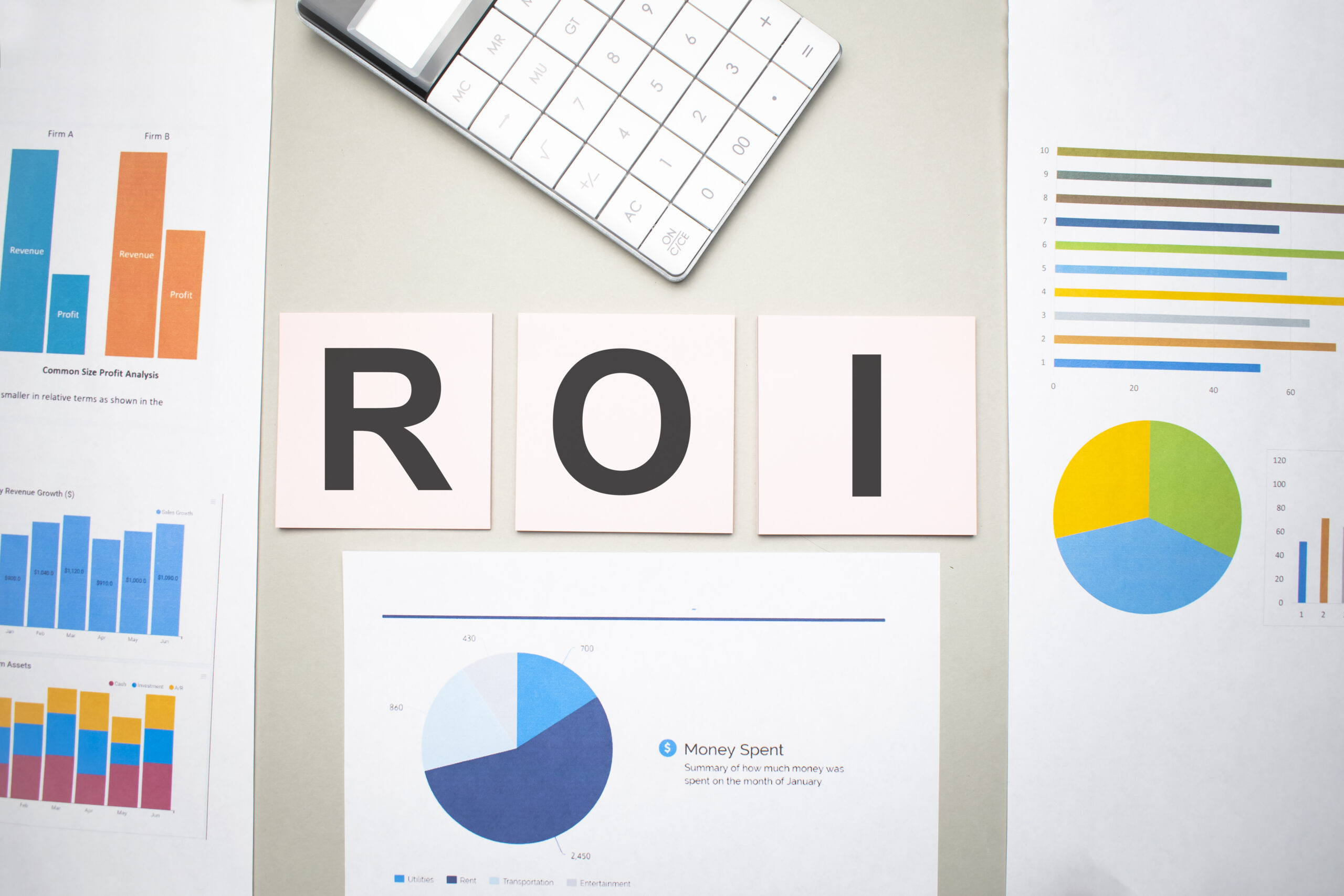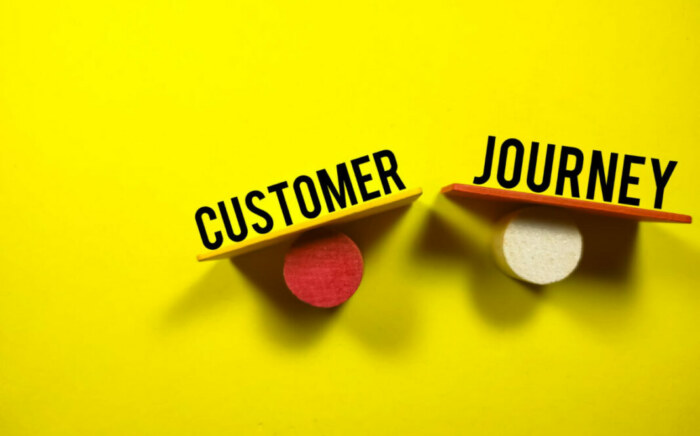| Heading | Sub-Heading |
|---|---|
| Introduction | – What is ROI in marketing? |
| – Importance of achieving high ROI with effective marketing | |
| Section 1: Setting Clear Objectives | – Defining marketing objectives |
| – Aligning objectives with overall business goals | |
| Section 2: Thorough Market Research | – Importance of market research for high ROI |
| – Conducting market research effectively | |
| Section 3: Targeting the Right Audience | – Identifying the target audience |
| – Segmenting the audience for targeted marketing | |
| Section 4: Crafting Compelling Value Proposition | – Developing a strong value proposition |
| – Communicating unique selling points to the audience | |
| Section 5: Building a Strong Brand Identity | – Importance of brand identity in marketing |
| – Strategies for building a strong brand identity | |
| Section 6: Leveraging Various Marketing Channels | – Overview of different marketing channels |
| – Choosing the proper channels for reaching the target audience | |
| Section 7: Implementing SEO Strategies | – Importance of SEO in achieving high ROI |
| – Optimizing website content and structure for search engines | |
| Section 8: Effective Social Media Marketing | – Leveraging social media platforms for high ROI |
| – Developing engaging content and fostering customer engagement | |
| Section 9: Email Marketing Strategies | – Utilizing email marketing for high ROI |
| – Personalization and automation of email campaigns | |
| Section 10: Content Marketing | – Creating valuable and engaging content for the audience |
| – Distributing content through various channels | |
| Section 11: Pay-Per-Click Advertising | – Implementing PPC campaigns for targeted advertising |
| – Optimizing ad campaigns for high ROI | |
| Section 12: Marketing Automation | – Streamlining marketing processes with automation |
| – Benefits of marketing automation for achieving high ROI | |
| Section 13: Utilizing Video Marketing | – Leveraging the power of video for capturing audience |
| – Incorporating videos into marketing campaigns | |
| Section 14: Leveraging Affiliate Marketing | – Partnering with affiliates for promoting products/services |
| – Implementing effective affiliate marketing strategies | |
| Section 15: Engaging in Remarketing Campaigns | – Re-engaging potential customers through remarketing |
| – Crafting personalized and compelling remarketing ads | |
| Section 16: Measuring and Analyzing Key Metrics | – Importance of tracking and analyzing marketing metrics |
| – Tools and methods for measuring ROI | |
| Section 17: Optimizing Conversion Rate | – Strategies for improving website conversion rates |
| – Conducting A/B testing and optimizing website elements | |
| Section 18: Providing Exceptional Customer Experience | – Importance of customer experience for high ROI |
| – Strategies for delivering exceptional customer experience | |
| Section 19: Leveraging the Power of Referral Marketing | – Harnessing word-of-mouth for high ROI |
| – Implementing referral programs and incentivizing referrals | |
| Section 20: Keeping Pace with Emerging Technologies | – Importance of embracing emerging technologies |
| – Examples of technologies shaping marketing | |
| Section 21: Adapting to Changing Consumer Behavior | – Understanding changing consumer behavior |
| – Adapting marketing strategies to meet consumer needs | |
| Section 22: Staying Ahead of Competitors | – Analyzing competitors’ marketing strategies |
| – Differentiating from competitors and offering superior value | |
| Section 23: Investing in Professional Marketing Services | – Benefits of partnering with marketing professionals |
| – Areas where professional services can optimize marketing | |
| Frequently Asked Questions (FAQs) | – What is ROI in marketing? |
| – How can businesses achieve high ROI with effective marketing? | |
| – Why is market research necessary for achieving high ROI? | |
| – How can businesses measure the ROI of their marketing campaigns? | |
| – Is it necessary to invest in multiple marketing channels? | |
| – What role does customer experience play in achieving high ROI? | |
| Conclusion | – Summarizing the key points |
| – Reinforcing the importance of effective marketing for high ROI |
Achieve High ROI with Effective Marketing
Introduction
In today’s competitive business landscape, achieving a high return on investment (ROI) is crucial for the success of any marketing campaign. Effective marketing strategies drive sales, increase brand awareness, and generate leads. However, with the ever-evolving digital landscape and changing consumer behavior, marketers need help to achieve high ROI. This article will explore various techniques and strategies that can help businesses achieve high ROI with effective marketing.
1. Understanding the Importance of Achieving High ROI
Before diving into specific strategies, it is essential to understand why achieving high ROI is critical for businesses. High ROI indicates that a marketing campaign generates substantial returns compared to investment. It ensures that marketing efforts are efficient and cost-effective and contribute positively to business growth. Achieving high ROI boosts profitability and provides a competitive advantage, allowing businesses to allocate resources effectively and focus on strategies that deliver tangible results.
2. Setting Clear Marketing Objectives
To achieve high ROI, it is vital to set clear marketing objectives aligned with the overall business goals. Well-defined objectives provide a roadmap for the marketing team, enabling them to create targeted campaigns and measure their success accurately. Whether the aim is to increase sales, boost brand awareness, or generate leads, having a clear direction ensures that marketing efforts are focused and strategic.
3. Conducting In-depth Market Research
Effective marketing begins with thorough market research. Understanding the target market, consumer preferences and industry trends is crucial for crafting compelling campaigns. Market research provides valuable insights into customer behavior, enabling businesses to tailor their marketing strategies accordingly. By identifying the target audience’s needs, pain points, and desires, companies can create messaging and offers that resonates with their potential customers, ultimately driving higher ROI.
4. Targeting the Right Audience
One of the keys to achieving high ROI is targeting the right audience. Casting a wide net and trying to appeal to everyone often leads to wasted resources and inefficient marketing campaigns. By identifying the ideal customer profile and narrowing down the target audience, businesses can ensure that their marketing efforts reach the people most likely to convert. This targeted approach allows for personalized messaging and more effective lead generation, maximizing ROI.
5. Crafting Compelling Value Propositions
In a crowded marketplace, having a compelling value proposition is crucial for capturing the attention of potential customers. A value proposition highlights a product or service’s unique benefits and value to consumers. It answers the question, “Why should customers choose you over competitors?” By crafting a solid and compelling value proposition, businesses can differentiate themselves, attract their target audience, and achieve higher ROI.
6. Developing a Strong Brand Identity
Building a solid brand identity is essential for long-term success and high ROI. A strong brand creates trust, credibility, and emotional connections with customers. It differentiates a business from competitors and helps build brand loyalty. A well-defined brand identity enhances brand recognition and recall, including a clear brand message, visual elements, and consistent communication. This, in turn, leads to increased customer engagement, higher conversions, and, ultimately, improved ROI.
7. Leveraging the Power of Content Marketing
Content marketing has become a powerful tool for businesses to engage their audience, build brand authority, and drive conversions. Companies can attract and retain customers throughout the buyer’s journey by creating valuable, informative, and relevant content. Content marketing includes various formats such as blog posts, articles, videos, infographics, and whitepapers. Businesses can maximize their reach, establish thought leadership, and achieve high ROI by strategically distributing content across different channels and platforms.
8. Harnessing the Potential of Social Media Advertising
Social media platforms have revolutionized the way businesses connect with their audience. With billions of active users, platforms like Facebook, Instagram, Twitter, and LinkedIn provide immense opportunities for targeted advertising. Companies can leverage advanced targeting options to reach their ideal customers based on demographics, interests, and behaviors. Social media advertising allows for precise campaign measurement, optimization, and retargeting, enabling businesses to achieve high ROI by reaching the right audience with compelling offers.
9. Implementing Search Engine Optimization (SEO) Strategies
Search Engine Optimization (SEO) is crucial for improving online visibility and driving organic traffic to a website. By optimizing website content, meta tags, URLs, and other elements, businesses can rank higher in search engine results pages (SERPs). Higher rankings lead to increased visibility, organic traffic, and ROI. Implementing effective SEO strategies involves keyword research, on-page optimization, technical optimization, link building, and monitoring performance through analytics tools.
10. Utilizing Pay-Per-Click (PPC) Advertising
Pay-Per-Click (PPC) advertising is a highly effective strategy for achieving high ROI, particularly in the short term. With PPC, businesses bid on keywords, and their ads appear at the top of search engine results or relevant websites. Advertisers pay only when a user clicks on their ad, making it a cost-effective method. By carefully selecting keywords, creating compelling ad copies, and optimizing landing pages, businesses can drive targeted traffic, increase conversions, and maximize ROI.
11. Embracing Influencer Marketing
Influencer marketing has gained significant traction in recent years. Businesses can tap into their audience and build credibility by partnering with influencers with a significant following and influence in their respective niches. Influencers can promote products or services through sponsored posts, reviews, or endorsements, helping companies to reach a wider audience and generate leads. The key to successful influencer marketing lies in finding the right influencers who align with the brand’s values and target audience, ensuring authenticity and high ROI.
12. Maximizing Email Marketing Campaigns
Email marketing remains one of the most effective channels for nurturing leads and driving conversions. Businesses can stay connected with their audience and build lasting relationships by creating a targeted email list and crafting personalized, engaging email campaigns. Email marketing allows for segmentation, automation, and tracking, enabling companies to deliver the right message to the right people at the right time. With compelling offers, valuable content, and effective calls to action, businesses can achieve high ROI through email marketing.
13. Implementing Marketing Automation
Marketing automation streamlines repetitive marketing tasks, allowing businesses to focus on strategy and creativity. By implementing marketing automation tools, companies can automate email campaigns, lead nurturing, social media scheduling, and other marketing activities. Automation improves efficiency, reduces manual errors, and ensures consistent channel messaging. With well-planned automation workflows and personalized customer journeys, businesses can achieve higher productivity, increased engagement, and improved ROI.
14. Utilizing Video Marketing
The video has become an increasingly popular and influential format for capturing the audience’s attention and conveying messages. By creating engaging and informative videos, businesses can communicate their brand story, showcase products or services, and connect with customers on an emotional level. Video marketing can be utilized on various platforms, including websites, social media, and video-sharing sites like YouTube. With the rise of live streaming and interactive videos, businesses have more opportunities to leverage video marketing to achieve high ROI.
15. Leveraging the Potential of Affiliate Marketing
Affiliate marketing allows businesses to partner with affiliates who promote their products or services in exchange for a commission. This performance-based marketing model ensures that companies pay only for actual results. Affiliate marketing leverages the reach and influence of affiliates, which can be bloggers, social media influencers, or industry experts. By providing affiliates with attractive incentives, tracking affiliate performance, and optimizing affiliate partnerships, businesses can drive sales, expand their reach, and achieve high ROI.
16. Engaging in Remarketing Campaigns
Remarketing, also known as retargeting, is a strategy that targets users who have previously interacted with a business but have yet to convert. By placing cookies or pixels on website visitors, companies can display targeted ads to them as they browse other websites or social media platforms. Remarketing keeps a brand top-of-mind and encourages users to return and complete their desired action. By crafting compelling and personalized remarketing ads, businesses can improve conversion rates and achieve high ROI by re-engaging potential customers.
17. Measuring and Analyzing Key Metrics
To achieve high ROI, measuring and analyzing key marketing metrics is essential. By tracking metrics such as website traffic, conversions, click-through rates, cost per acquisition, and customer lifetime value, businesses can gain valuable insights into the performance of their marketing campaigns. Analytics tools like Google Analytics provide in-depth data and reports, allowing companies to identify strengths, weaknesses, and opportunities for optimization. Companies can make data-driven decisions, optimize campaigns, and achieve higher ROI by continuously monitoring and analyzing metrics.
18. Optimizing Conversion Rate
Conversion rate optimization (CRO) focuses on improving the percentage of website visitors who take the desired action, such as purchasing, filling out a form, or subscribing to a newsletter. Businesses can increase their conversion rates and achieve higher ROI by analyzing user behavior, conducting A/B testing, and optimizing website elements. CRO involves improving website design, streamlining the user journey, optimizing landing pages, and implementing clear call-to-action buttons.
19. Providing Exceptional Customer Experience
Delivering exceptional customer experience is crucial for building brand loyalty and driving repeat business. Satisfied customers are likelier to become brand advocates, refer others, and make repeat purchases. By providing personalized and responsive customer support, delivering on promises, and continuously improving products or services, businesses can create a positive customer experience that leads to higher customer retention, increased referrals, and improved ROI.
20. Leveraging the Power of Referral Marketing
Referral marketing harnesses the power of word-of-mouth and encourages existing customers to refer their friends, family, or colleagues to a business. By incentivizing referrals and implementing referral programs, companies can tap into their loyal customer base and extend their reach to new potential customers. Referral marketing creates a sense of trust and social proof, as recommendations from friends or family carry significant weight. Businesses can achieve high ROI through this cost-effective marketing strategy by tracking and rewarding successful referrals.
21. Incorporating User-Generated Content
Customers or users of a product or service create user-generated content (UGC). It includes reviews, testimonials, social media posts, and other user-generated feedback or content forms. Incorporating UGC into marketing efforts adds authenticity and social proof, as potential customers trust the opinions of their peers. Businesses can enhance credibility, build trust, and achieve high ROI by encouraging customers to share their experiences, featuring UGC on websites and social media, and leveraging UGC in marketing campaigns.
22. Keeping Pace with Emerging Technologies
Staying abreast of emerging technologies is crucial for effective marketing in the rapidly evolving digital landscape. Technologies such as artificial intelligence (AI), virtual reality (VR), augmented reality (AR), and voice search are shaping the way customers interact with brands and consume content. By embracing these technologies and finding innovative ways to incorporate them into marketing strategies, businesses can gain a competitive edge, capture attention, and achieve high ROI by staying ahead of the curve.
23. Adapting to Changing Consumer Behavior
Consumer behavior constantly evolves, driven by technological advancements, cultural shifts, and economic changes. To achieve high ROI, businesses must adapt to these changes and understand their target audience’s preferences, needs, and expectations. By monitoring trends, conducting regular market research, and staying connected with customers, businesses can tailor their marketing strategies to align with changing consumer behavior, ensuring relevance, engagement, and, ultimately, high ROI.
24. Staying Ahead of Competitors
In a competitive marketplace, standing out is vital for achieving high ROI. Businesses must analyze their competitors’ marketing strategies, identify their unique selling propositions, and find ways to differentiate themselves. By offering superior value, delivering exceptional customer service, and continuously innovating, businesses can carve a niche and attract customers willing to pay a premium. Staying ahead of competitors requires ongoing analysis, strategic positioning, and a relentless focus on delivering value and exceeding customer expectations.
25. Investing in Professional Marketing Services
Investing in professional marketing services can be a wise decision for businesses needing more in-house resources or expertise to execute effective marketing strategies. Marketing agencies or consultants bring specialized knowledge, experience, and skills, enabling enterprises to leverage their expertise for high ROI. Whether it’s comprehensive marketing strategy development, campaign execution, or specific areas such as SEO or social media management, partnering with professionals can streamline efforts, optimize resources, and achieve desired results.
Frequently Asked Questions (FAQs)
1. What is ROI in marketing? ROI stands for return on investment and measures the profitability of a marketing campaign or strategy. It indicates the amount of revenue generated relative to the amount invested. In marketing, achieving high ROI means that the marketing efforts are efficient and effective, generating substantial returns compared to the investment made.
2. How can businesses achieve high ROI with effective marketing? Companies can achieve high ROI with effective marketing by setting clear objectives, conducting thorough market research, targeting the right audience, crafting compelling value propositions, developing a solid brand identity, leveraging various marketing channels and strategies, measuring and analyzing key metrics, optimizing conversion rate, providing exceptional customer experience, and staying ahead of competitors.
3. Why is market research necessary for achieving high ROI? Market research provides valuable insights into customer behavior, preferences, and industry trends. By understanding the target market and their needs, businesses can create targeted campaigns, deliver personalized messages, and offer products or services that resonate with their audience. Market research minimizes guesswork, increases the effectiveness of marketing efforts, and ultimately contributes to achieving high ROI.
4. How can businesses measure the ROI of their marketing campaigns? To calculate the ROI of marketing campaigns, companies need to track key metrics such as conversions, sales revenue, customer acquisition cost, customer lifetime value, and return on ad spend. Analytics tools like Google Analytics, CRM systems, and attribution models can help businesses accurately measure and evaluate the impact of their marketing efforts on the bottom line.
5. Is investing in multiple marketing channels necessary to achieve high ROI? Investing in multiple marketing channels can be beneficial as it allows businesses to reach a broader audience, diversify their customer acquisition sources, and maximize their chances of success. However, marketing channels should be chosen based on the target audience, industry dynamics, and the most effective channels for reaching and engaging the desired customer segments.
6. What role does customer experience play in achieving high ROI? Customer experience is significant to attain high ROI, as satisfied customers are more likely to make repeat purchases, refer others, and become brand advocates. By providing exceptional customer service, personalized interactions, and seamless experiences, businesses can enhance customer loyalty, drive positive word-of-mouth, and improve ROI.
Conclusion
Achieving high ROI with effective marketing requires a strategic and holistic approach. Businesses can maximize their returns on investment by understanding the target audience, developing a compelling value proposition, leveraging various marketing channels, measuring key metrics, and continuously optimizing strategies. It’s essential to adapt to changing consumer behavior, stay ahead of competitors, and invest in professional marketing services when necessary. By implementing these strategies and delivering value and exceptional customer experiences, businesses can achieve high ROI and drive long-term success.
Valuable Recourses:
- Understanding Your Target Audience: I’d like you to learn more about how important it is to understand your target audience and how it can impact your marketing strategy.
- Developing a Compelling Value Proposition: Discover how to create a unique value proposition that resonates with your target audience and sets your business apart.
- Leveraging Various Marketing Channels: Explore different marketing channels and tactics to reach and engage your target audience effectively.
- Measuring Key Metrics: Find out how to identify and track key metrics to measure the success of your marketing campaigns and optimize your strategies.
- The Importance of Conversion Rate Optimization (CRO): Learn the importance of continuously optimizing your marketing strategies to stay ahead of the competition and achieve better results.
Please contact our digital marketing agency today to talk about how we can help you achieve our digital marketing agency today to speak about how we can help you achieve high ROI through our professional marketing services. Our team of experts is ready to help you drive long-term success and exceed your marketing goals.




